Grey cat breeds captivate pet lovers with their sleek, shimmering coats that range from soft blue-grey to silvery hues. Whether you’re drawn to their elegant appearance or curious about their unique personalities, these felines offer a perfect blend of beauty and companionship. If you’re considering adding a domestic cat breeds member to your family, exploring popular grey cat breeds is a great starting point. From ancient origins to modern homes, these cats thrive with proper care, including a clean litter box and balanced nutrition.
In this guide, we’ll dive into the most iconic grey cat breeds, covering their physical traits, temperaments, histories, and essential care tips. Backed by insights from veterinary experts and breed standards from organizations like the Cat Fanciers’ Association (CFA), this article helps you choose the right grey companion.
Russian Blue
The Russian Blue stands out among grey cat breeds for its slender, muscular build and plush double coat in a distinctive blue-grey shade. This silky fur feels luxurious and gives the cat a larger-than-life presence. Kittens start with yellow eyes that mature into striking emerald green, adding to their allure.
Reserved yet playful, Russian Blues often bond deeply with one family member while remaining wary of strangers. Their obsession with cleanliness means they demand a spotless litter box—dirty ones may be ignored entirely. According to veterinary sources, these cats love food, so portion control prevents obesity. Originating from Russia, their thick coat adapted to harsh winters, with legends suggesting their fur mimicked seals, making them hunter targets in the past.
Owners report Russian Blues as intelligent hunters who enjoy interactive toys. For optimal health, provide high-protein diets and regular vet check-ups to monitor their lean frame.
Korat
One of the purest grey cat breeds, the Korat boasts a compact, muscular body with a blue-grey coat tipped in silver for a glowing effect. Their eyes shift from blue at birth to vibrant green, enhancing their mystical charm.
Highly social and affectionate, Korats crave attention, snuggling and playing with family members. They tolerate other pets but can get jealous of divided affections. In Thai culture, they’re symbols of luck and prosperity, featured in ancient manuscripts like the tamra maew.
 tamra maew, a Thai book of cat poems
tamra maew, a Thai book of cat poems
Rare in the U.S., Korats need mental stimulation through puzzle feeders and climbing trees. Their short coat requires minimal grooming, but weekly brushing keeps it shimmering.
Chartreux
Chartreux cats earn their “potato on toothpicks” nickname from a stocky body on slender legs, covered in a dense, woolly blue-grey coat that’s water-repellent. Robust and energetic, they’re exceptional mousers with a quiet, loyal demeanor.
Playful and responsive to their names, these grey cat breeds love fetch and adapt well to family life. Folklore ties them to French monks in the Alps, bred for silent hunting during meditations. Modern care involves interactive play to channel their hunting instincts and a diet supporting muscle maintenance.
Nebelung
Resembling a longhaired Russian Blue, the Nebelung features a semi-long blue-grey coat with silver guard hairs and piercing green eyes. Graceful and athletic, they’re mild-mannered companions.
Affectionate without being clingy, Nebelungs play gently and shy from strangers. Developed in America from a Domestic Shorthair and Russian Blue cross, their name evokes “mist creatures” in German. For care, focus on detangling their fur weekly and providing quiet spaces.
If seeking most loving cat breeds, Nebelungs offer devoted bonds with minimal demands.
British Shorthair
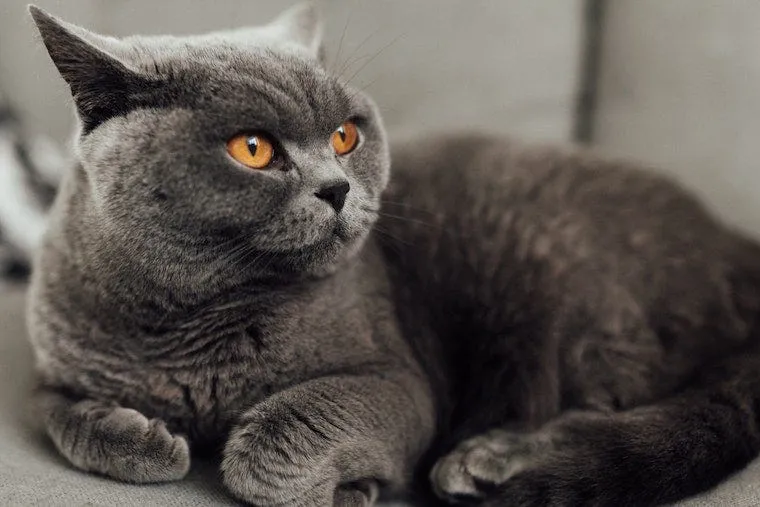 British Shorthair
British Shorthair
The British Shorthair, once dubbed British Blue, sports a plush, waterproof blue-grey coat over a cobby, powerful frame with a broad head. Medium to large, they’re patient with kids and adaptable.
Initially reserved, they form strong family ties. As the first show cat, they evolved from working mousers to cherished pets. Maintain their health with obesity-preventing exercise and dental checks, per ASPCA guidelines.
Blue Persian
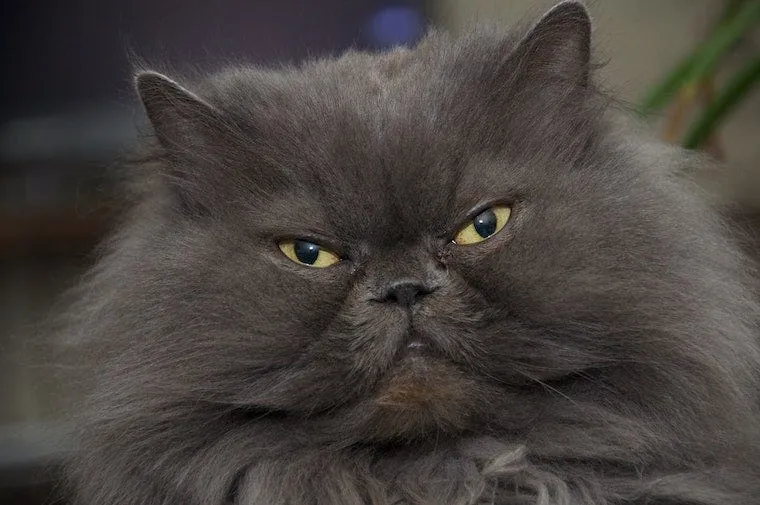 a fluffy grey Blue Persian cat
a fluffy grey Blue Persian cat
Blue Persians dazzle with long, silky grey fur, tracing roots to ancient Persian and Angora crosses popularized in Europe. Gentle and calm, they’re “furniture with fur” but benefit from daily play.
Grooming is key—daily brushing prevents mats, and eye cleaning avoids tear staining. They thrive in peaceful homes with soft bedding.
Scottish Fold
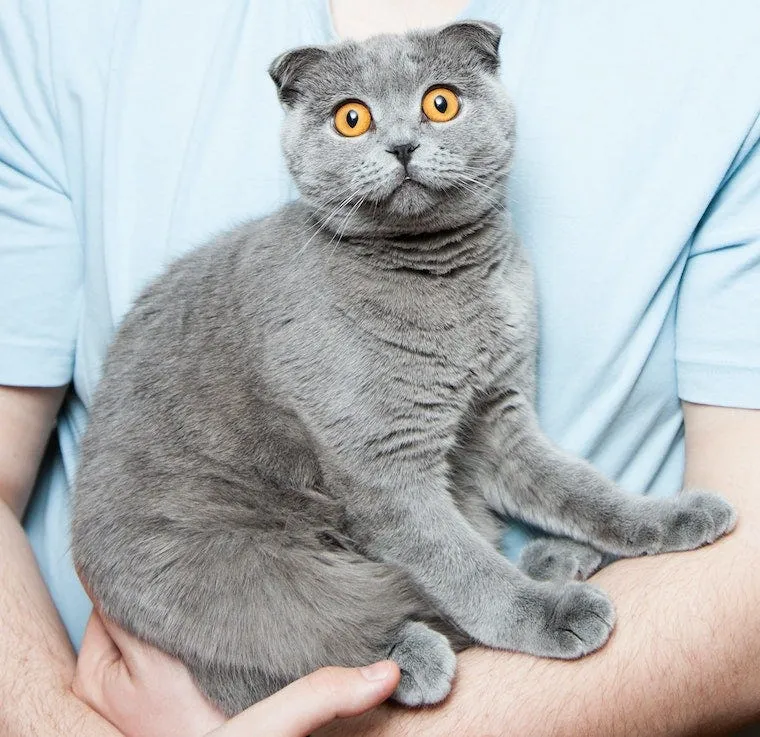 Scottish Fold cat in man
Scottish Fold cat in man
Scottish Folds have dense, padded grey coats (short or long) and folded ears from a barn cat named Susie. Sweet and human-like in posture, half of kittens inherit the fold.
Popular worldwide, they need joint supplements for ear-related health, as advised by vets. Gentle play and high-quality food support their sturdy build.
Sphynx
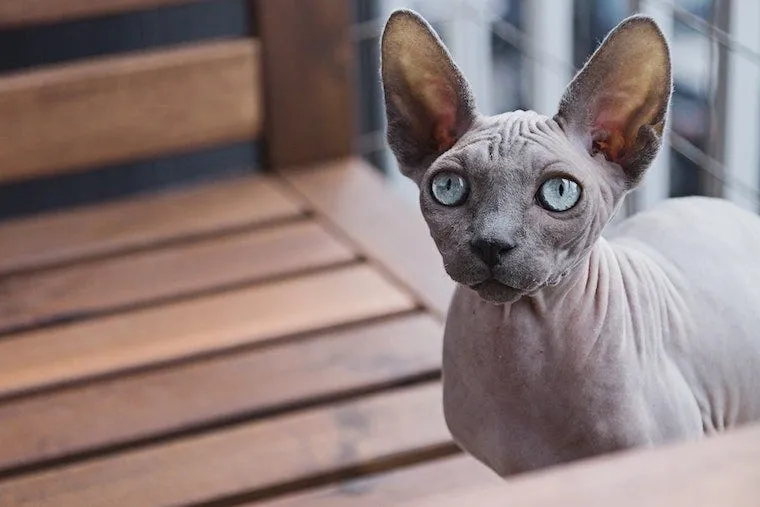 Sphynx cat
Sphynx cat
Hairless Sphynx often show grey skin or fine down, requiring weekly baths to prevent oil buildup. Social and inquisitive, they originated from a Canadian mutation resembling Egyptian sculptures.
Warm clothing in cool weather and skin moisturizers keep them healthy. Their energy demands interactive sessions.
Domestic Shorthair
 grey domestic shorthair cat with white chin outside
grey domestic shorthair cat with white chin outside
Making up 90-95% of U.S. cats, Domestic Shorthairs appear in solid grey, tabby, or bi-color patterns. Versatile and hardy, they’re low-maintenance wonders.
For details on variations, check domestic cat breeds.
Typical Personalities of Grey Cat Breeds
Grey cat breeds often share serene yet playful traits. Calm observers by day, they’re curious explorers at heart, intelligent enough for tricks. Vocal or subtle communicators, they adapt well. Traits vary, but many rank among the longest living cat breed options with proper care.
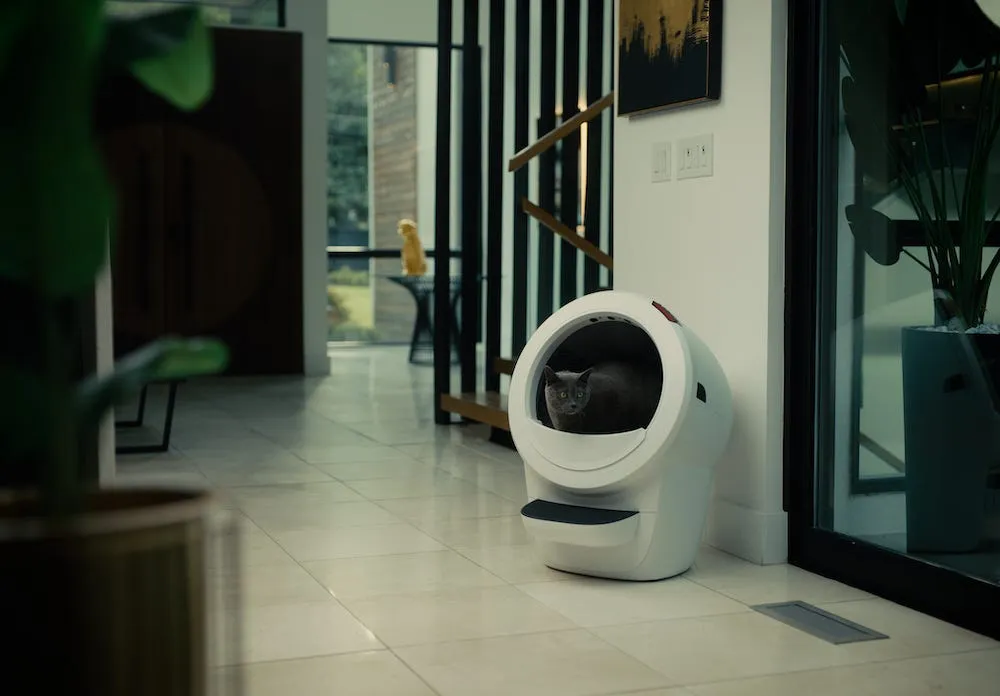 grey cat using Litter-Robot
grey cat using Litter-Robot
Identifying Your Grey Cat’s Breed
Spot clues like coat texture (plush for Russian Blue), body type (stocky Chartreux), or skin (Sphynx). Green eyes hint at Korat or Nebelung. DNA tests confirm pedigrees.
Other Grey Cat Breeds
Grey appears in Bengals, purebred bengal cat, and more. All benefit from self-cleaning litter boxes for hygiene.
Grey cat breeds bring elegance and joy—choose based on lifestyle, consult vets for tailored care, and enjoy their unique spirits. Explore more on our site for cat parenting tips!
References:
- Cat Fanciers’ Association (CFA) breed standards.
- ASPCA pet health guidelines.
- Litter-Robot breed profiles (accessed 2025).
